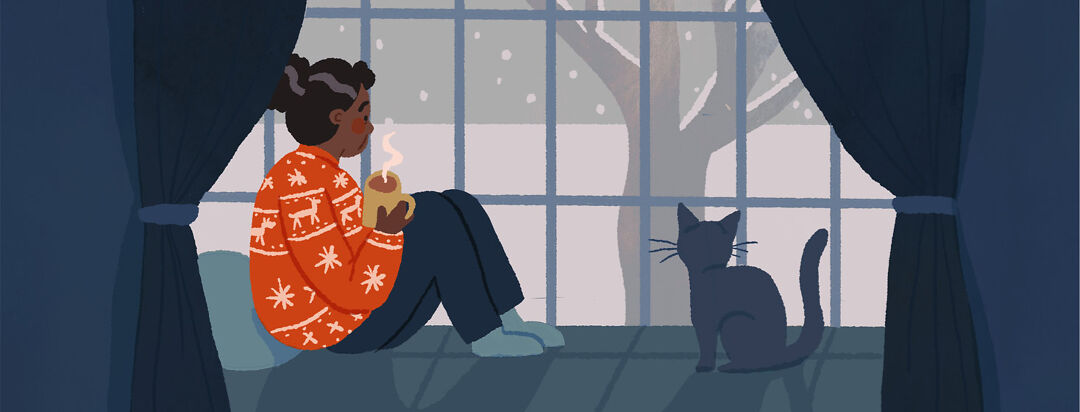Cue the Blues: Seasonal Depressive Shifts in Bipolar Disorder
Living with bipolar disorder can be a challenge at any time of year. But when the seasons shift, things can get even harder. Many people with bipolar disorder will experience what's called a seasonal mood shift for their depressive episodes.1
The most common pattern takes place when the winter chill sets in and people begin to experience familiar symptoms of sadness and lethargy.
What does a bipolar seasonal depressive shift feel like?
Depression in the winter will likely resemble other depressive episodes you've had. You might feel more lethargic than usual, as if your body is constantly heavy and tired. In my experience, sleeping more and gaining weight are also common.
Sometimes, the symptoms creep in unexpectedly. Then, suddenly, you look at the calendar and realize what's going on!
But why?!
I know – bipolar disorder is hard enough to manage. Why must some of us be cursed with a seasonal pattern on top of it all?
Research suggests a link between sunlight exposure and mood regulation. After all, researchers have evidence that bipolar disorder is tied to dysregulation in the part of the brain that controls the sleep/wake cycle. As the days shorten and sunlight diminishes, people with bipolar disorder may find themselves grappling with more depressive symptoms.1
Thanksgiving: A personal perspective
Most people I know look forward to Thanksgiving. The warmth, the food, the family – it can paint an appealing picture. But Thanksgiving is hands down my least favorite holiday.
Historically, any seasonal mood shifts I've experienced have hit their lowest around Thanksgiving. And my seasonal symptoms far predate my official diagnosis of bipolar disorder or any understanding of the condition. As a child, I felt depressed around this time of year without understanding why. This hardly makes for happy Thanksgiving memories to look back on!
Light therapy for depression
One strategy for combating seasonal depressive patterns can be light therapy. This is because, as mentioned, being exposed to less natural sunlight during winter can disrupt circadian rhythms and increase depressive symptoms.
Light therapy involves exposure to a bright light that mimics natural sunlight. Incorporating this practice into the daily routine has offered a tangible antidote for many, myself included.1,2
This or That
Where can we find you this summer?
Powerful, but not for everyone
However, light therapy is tricky in bipolar disorder. For many people, while the extra artificial light can feel wonderful, it can also make them experience symptoms of mania, hypomania, or mixed states. I carefully monitor my moods and use my light box accordingly.2
Always ask your healthcare provider before starting a new treatment, especially this one. If you and your team decide to give light therapy a try, make sure to get a light box that meets requirements.
Bipolar medicines: The moving target
People often struggle to get the "right" medicine combo that they hope will keep them well in the long term. But what if I challenge that thinking and suggest that medication can be a moving target?
Winter may cause you and your prescriber to reevaluate your medicine in order to address any increased depressive symptoms. You might find that your medicine needs to shift in the winter and back in the spring. Be sure to keep lines of communication open with your treatment team so they can help you strike the right balance throughout the year.1
Strategies for coping through the seasons
Lifestyle strategies are more powerful than you think. Establishing a consistent routine, incorporating regular exercise, and prioritizing self-care are essential anchors that can provide stability amid any seasonal turbulence. Mindfulness and stress-reduction techniques are great tools to have at your disposal.
Psychotherapy with a skilled provider is a great place to learn priceless self-management skills for the fall and all year round. The expertise of mental health professionals can provide valuable insights and help you construct a more stable, more enjoyable life in any season.
Embracing the seasons – despite bipolar depression
By being open about seasonal depressive shifts in bipolar disorder, we can foster community, reduce stigma, and offer support to those navigating these struggles. Let's try to embrace the seasons. Within the shadow of shorter days, the warmth of understanding can illuminate a path to hope and healing.
